Table of content
Pineapple fried rice, a vibrant and aromatic dish that originated in Southeast Asia, has captured the hearts and palates of food enthusiasts worldwide. This iconic recipe combines the sweet tanginess of fresh pineapple with savory elements like jasmine rice, protein-rich ingredients, and a medley of vegetables, all harmonized by fragrant spices and umami-rich sauces. Whether you’re hosting a tropical-themed dinner party, craving a comforting weeknight meal, or experimenting with global flavors, mastering the art of pineapple fried rice will elevate your culinary repertoire. In this comprehensive guide, we’ll explore the history of this dish, dissect its key components, and provide step-by-step instructions to ensure your pineapple fried rice is nothing short of spectacular.
The Origins and Cultural Significance of Pineapple Fried Rice
Pineapple fried rice, known in Thai as khao phad sapparot, is a beloved street food dish in Thailand, Malaysia, and Indonesia. Its creation is deeply rooted in the region’s agricultural abundance, where pineapples thrive in tropical climates and rice is a dietary staple. The dish’s popularity stems from its balance of flavors—sweet, salty, spicy, and umami—which reflect the Southeast Asian philosophy of harmonizing contrasting tastes.
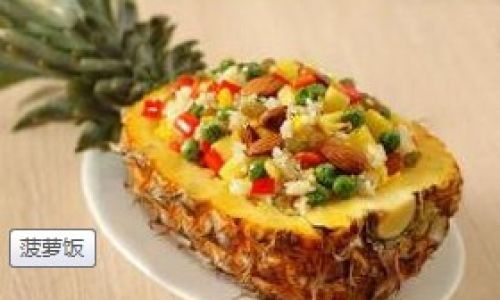
Historically, pineapple fried rice emerged as a clever way to utilize leftover rice and surplus ingredients. Street vendors and home cooks alike began incorporating fresh pineapple into fried rice, not only for its flavor but also for its ability to tenderize proteins and add a refreshing acidity. Today, the dish has transcended borders, appearing on menus in fusion restaurants and home kitchens globally. Its adaptability allows for endless variations, making it a canvas for creativity while retaining its core essence.
Key Components of Exceptional Pineapple Fried Rice
To create a memorable pineapple fried rice, attention to detail in every ingredient is paramount. Let’s break down the essential elements:
The Pineapple
The star ingredient deserves careful selection. Opt for a ripe yet firm pineapple—overripe fruit will become mushy, while underripe pineapple lacks sweetness. Look for a golden-yellow exterior, a sweet aroma at the stem, and leaves that are green and fresh. When preparing the pineapple, consider hollowing it out to use its shell as a serving bowl, adding a dramatic tropical flair to your presentation.
The Rice
The foundation of any fried rice is the grain itself. Long-grain jasmine rice is traditional, offering a fluffy texture and aromatic fragrance. For the best results, cook the rice a day in advance and refrigerate it. Cold rice firms up, preventing clumps and ensuring each grain remains distinct during stir-frying. If short on time, spread freshly cooked rice on a baking sheet to cool rapidly, fluffing it occasionally to release steam.
Proteins and Add-Ins
Proteins like shrimp, chicken, or tofu are common additions, providing substance and depth. For a vegetarian twist, consider marinated tempeh or edamame. Vegetables such as bell peppers, carrots, peas, and onions add color, crunch, and nutrition. Eggs, scrambled into the rice, contribute a silky richness.
Aromatics and Spices
Garlic, ginger, and shallots form the flavor base, sautéed until golden to release their aromatic oils. Curry powder, turmeric, or a pinch of chili flakes introduce warmth and complexity. Fresh herbs like cilantro or basil, added at the end, brighten the dish with their herbal freshness.
Sauces and Seasonings
A balanced blend of soy sauce, fish sauce, and a touch of lime juice or oyster sauce creates the signature umami-rich profile. For a sweeter note, a drizzle of honey or a sprinkle of palm sugar can enhance the pineapple’s natural sugars.
Step-by-Step Guide to Perfect Pineapple Fried Rice
Step 1: Prepare the Pineapple
-
Hollowing the Pineapple:
- Slice off the crown and about ¼ inch from the base to stabilize the fruit.
- Stand the pineapple upright and use a sharp knife to cut lengthwise along the diagonal, about 1 inch from the edge, to remove the flesh.
- Scoop out the remaining flesh with a spoon or melon baller, leaving a ½-inch-thick shell. Reserve the flesh for the rice.
-
Preparing Pineapple Chunks:
Dice the pineapple flesh into ½-inch cubes. Set aside 1½ cups for the recipe; save any extra for garnish or snacking.
Step 2: Cook the Rice
- Rinse 2 cups of jasmine rice under cold water until the water runs clear.
- Combine rice with 2½ cups water in a saucepan. Bring to a boil, then reduce heat to low, cover, and simmer for 15 minutes.
- Remove from heat and let stand, covered, for 10 minutes. Fluff with a fork and spread on a baking sheet to cool completely. Refrigerate for at least 2 hours or overnight.
Step 3: Prep the Ingredients
-
Proteins:
- For shrimp: Peel and devein 8 oz. of medium shrimp. Pat dry and season with salt and pepper.
- For chicken: Slice 8 oz. of boneless, skinless chicken thighs into bite-sized pieces. Marinate in 1 tbsp soy sauce and 1 tsp sesame oil.
- For tofu: Press 8 oz. of firm tofu, cut into cubes, and pan-fry until golden.
-
Vegetables:
Dice 1 small onion, 1 red bell pepper, and 1 carrot. Thaw ½ cup frozen peas.
-
Aromatics:
Mince 3 garlic cloves, 1 tbsp fresh ginger, and 2 shallots.
-
Eggs:
Whisk 2 large eggs with a pinch of salt.
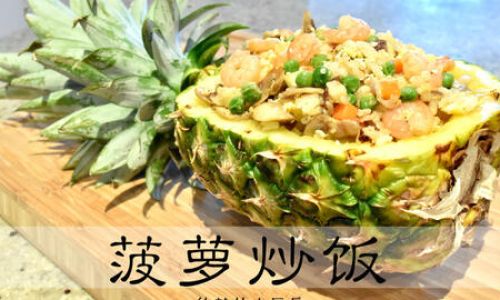
Step 4: Stir-Fry the Rice
- Heat 2 tbsp vegetable oil in a wok or large skillet over high heat.
- Add the aromatics: Sauté garlic, ginger, and shallots until fragrant (30 seconds).
- Add proteins: Stir-fry shrimp, chicken, or tofu until cooked through (2–3 minutes). Remove and set aside.
- Sauté vegetables: Add onions, bell peppers, and carrots. Stir-fry until tender-crisp (3–4 minutes). Add peas and cook for 1 minute.
- Push vegetables to one side of the pan. Pour the whisked eggs into the empty space and scramble until set. Mix with the vegetables.
- Add rice: Break up any clumps and stir-fry for 3–4 minutes until heated through.
- Season: Drizzle with 2 tbsp soy sauce, 1 tbsp fish sauce, and 1 tsp curry powder. Toss to coat evenly.
- Fold in pineapple: Add 1½ cups diced pineapple and cooked proteins. Stir gently to combine.
- Finish with lime: Squeeze juice from ½ lime and toss. Taste and adjust seasoning with salt, pepper, or a pinch of sugar if needed.
Step 5: Serve and Garnish
- Transfer the rice to the hollowed pineapple shell or a serving platter.
- Garnish: Top with chopped cilantro, thinly sliced green onions, toasted cashews, and a lime wedge.
- Optional additions: Serve with Sriracha, crushed red pepper flakes, or a sprinkle of toasted coconut.
Tips for Perfecting Your Pineapple Fried Rice
-
Master the Wok Technique:
- High heat is essential for achieving smoky, charred flavors. Ensure your wok or skillet is screaming hot before adding oil.
- Avoid overcrowding the pan; cook in batches if necessary to maintain high heat.
-
Balance Flavors:
- Taste as you go! Adjust soy sauce, lime, or spices to suit your palate.
- For a deeper flavor, toast whole spices like cumin or coriander before grinding them into the rice.
-
Texture Matters:
- The contrast between tender pineapple, crisp vegetables, and chewy rice is key. Avoid overcooking ingredients.
- For added crunch, toss in a handful of water chestnuts or roasted peanuts.
-
Creative Swaps:
- Proteins: Experiment with crab meat, squid, or mushrooms for vegetarian versions.
- Grains: Substitute jasmine rice with brown rice, quinoa, or cauliflower rice for a healthier twist.
- Fruit: Mango or papaya can replace pineapple for a variation, though the flavor profile will shift.
-
Presentation:
The pineapple shell isn’t just for show—it imparts a subtle fruity aroma to the rice. If unavailable, use a large serving bowl lined with banana leaves for a tropical touch.
Troubleshooting Common Issues
-
Mushy Rice:
Always use day-old rice. If using fresh rice, spread it thinly on a tray to cool quickly.
-
Bland Flavor:
Amplify seasonings gradually. Add a splash of coconut aminos for gluten-free options or a dash of tamarind paste for tanginess.
-
Soggy Pineapple:
Pat diced pineapple dry with paper towels before adding to the wok. Avoid canned pineapple, which releases excess liquid.
-
Burnt Aromatics:
Keep a close eye on garlic and ginger; they burn easily. Have all ingredients prepped and within arm’s reach.
Pairing Suggestions
Pineapple fried rice pairs beautifully with:
- Beverages: A crisp Thai iced tea, lemongrass-infused water, or a light lager.
- Appetizers: Fresh spring rolls, shrimp crackers, or coconut shrimp.
- Desserts: Mango sticky rice, coconut pandan custard, or a tropical fruit platter.
Cultural Variations to Explore
- Thai-Style: Emphasize lemongrass, kaffir lime leaves, and a generous squeeze of lime.
- Malaysian-Style: Add dried shrimp, belacan (shrimp paste), and a fried egg on top.
- Hawaiian-Style: Incorporate Spam, Portuguese sausage, and a drizzle of macadamia nut oil.
Conclusion
Pineapple fried rice is more than a meal—it’s a celebration of tropical flavors and culinary ingenuity. By mastering the balance of sweet, savory, and spicy notes, and by respecting the integrity of each ingredient, you can transform simple components into a dish that delights the senses. Whether you’re a novice cook or a seasoned chef, this recipe invites creativity and experimentation. So, the next time you crave a taste of paradise, head to your kitchen, grab a pineapple, and let the magic unfold. Your taste buds—and your guests—will thank you.

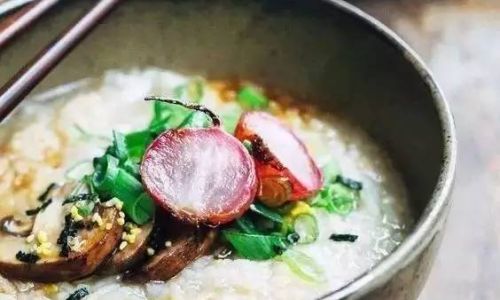
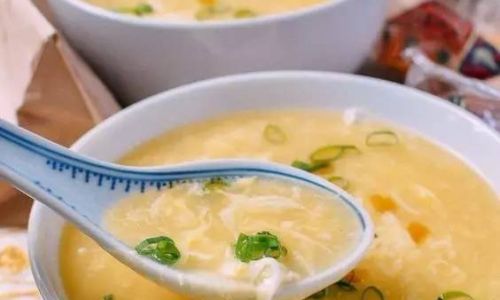

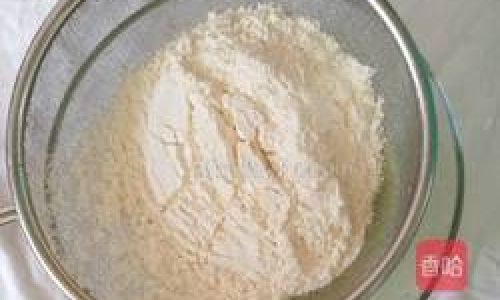

0 comments